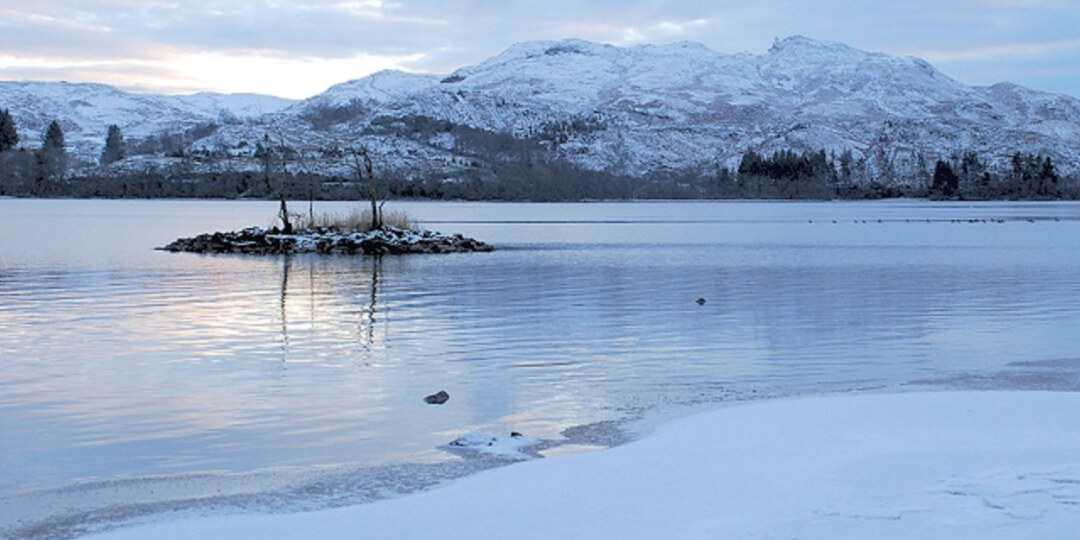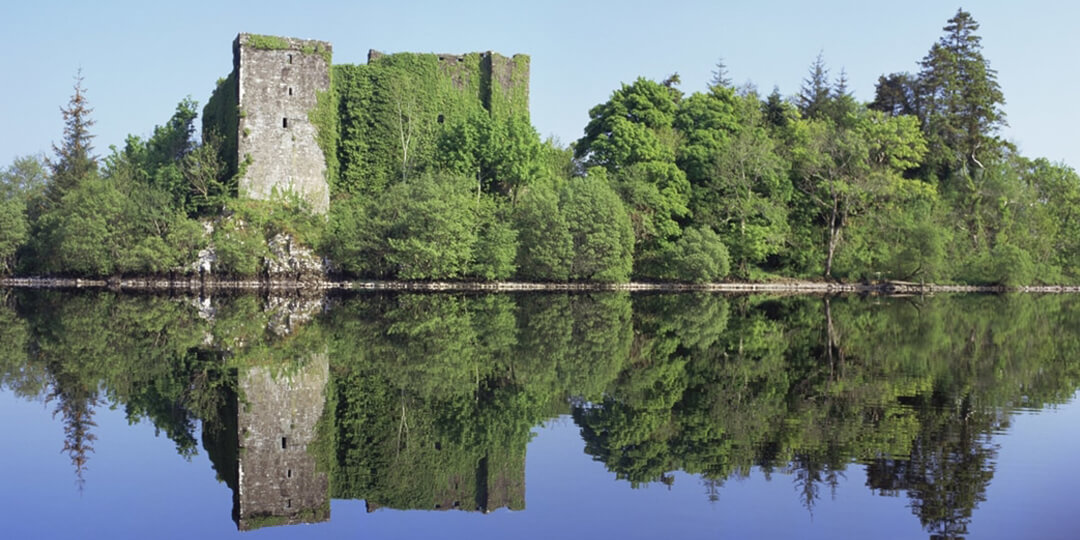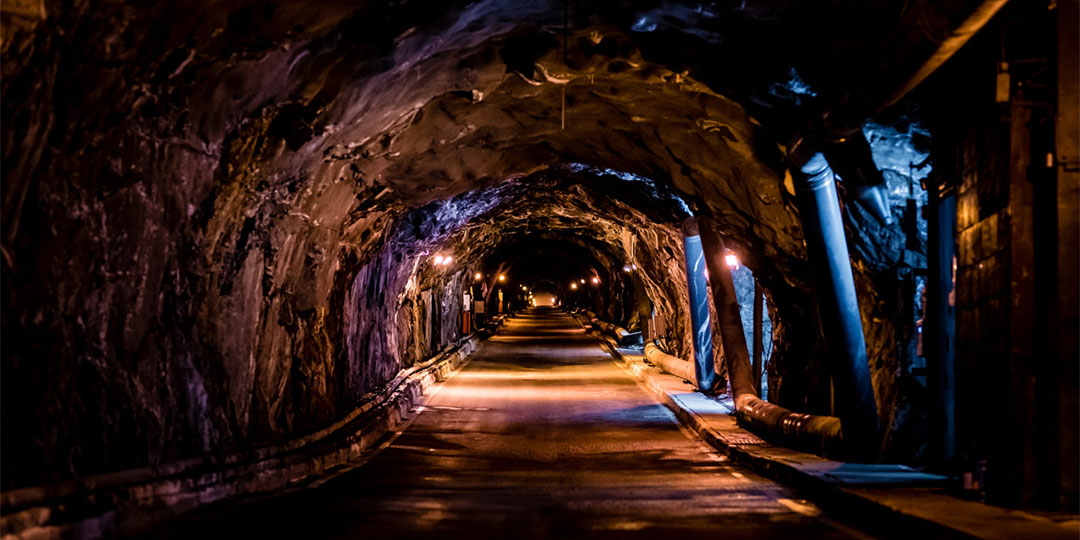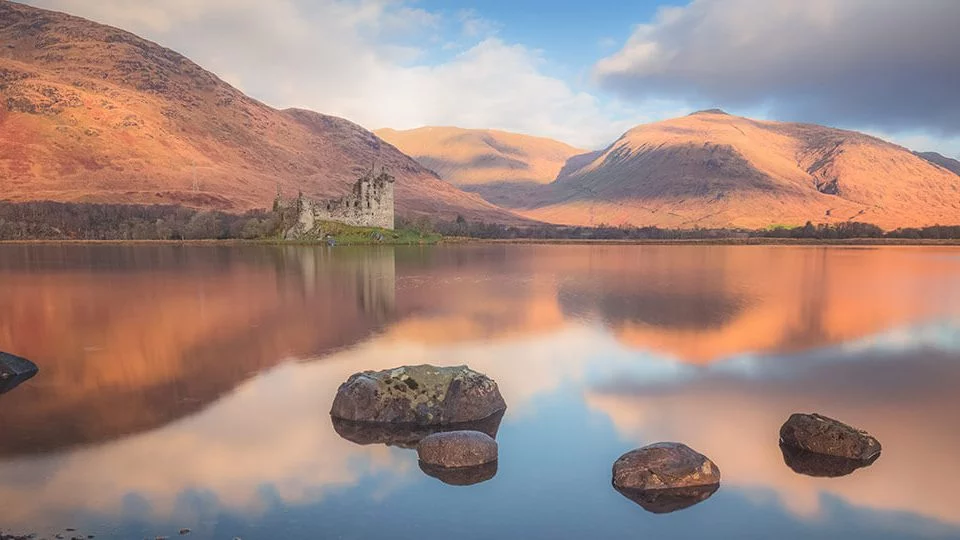As well as the chance to enjoy outdoor activities and the abundant wildlife on the area, Argyll is world famous for its incredible beauty and rich historical legacy, and Loch Awe is no exception.
Kilchurn Castle and Clan Campbell
The loch’s most iconic landmark is the ruin of Kilchurn Castle (above), occupying a commanding position at the northerly head of the loch. Dating back to the 1400s, and built by the Campbell Clan of Glenorchy, the castle was developed further over the centuries, before being abandoned in 1760 due to severe storm damage, and falling into disrepair.
Within Kilchurn Castle is the oldest surviving barracks on the British mainland, where government soldiers were billeted during the Jacobite risings of 1715 and 1745.
Now under the custodianship of Historic Scotland, Kilchurn Castle is open April-October and free to visit, although at the time of writing (Jan 2021) the castle interior is closed for restoration works with visitors able to access the exterior parts of the site.
For the best viewing and photography angles of the castle, stop off at the layby on the eastern shore of the loch, opposite the castle. The castle is also accessible on foot (depending on water levels in the loch) around 800 yards (730m) from its car park just off the A85 near Dalmally, or by boat from the nearby village of Lochawe on the western shore.
St Conan’s Kirk

Lochawe village is also where you can visit the wonderful St Conan’s Kirk. Voted one of the top 10 buildings in Scotland from the last 100 years, St Conan’s was originally built in the mid-1880s, before further work in the early 1900s and its final consecration in 1930. The church is a category A listed building and one of the most popular visitor attractions in Argyll.
A new addition to St Conan’s is the popular Gatehouse Tearoom, which opens daily April-Oct and at weekends during the winter months. You can check opening times at the St Conans website.
Islands and Crannogs of Loch Awe

In addition to the attractions around its edge, Loch Awe also has some 50 islands and the remains of around 20 sites of crannogs – a type of dwelling place dating back as far as 500AD. Crannogs were houses built on a loch or lake, using either an artificially created island or a platform raised above the water level on stilts.
Among the islands of Loch Awe visits to the beautiful islands of Innishail and Innis Chonnell are well worth considering, and both can be reached by hiring a boat (row or with outboard) or kayak from boat hire operators on Loch Awe.
Innishail , for centuries the burial place of the chiefs of Clan Campbell, is today a magical oasis of woodland. To visit the island and enjoy its tranquil setting or just explore the loch, hire a boat from Loch Awe Boat Hire at Ardbrecknish on the loch’s westerly shore and head northwest up the loch. Please note, Loch Awe Boat Hire adhere to strict safety standards and provide all hirers with safety jackets and instruction. Cliff, the friendly owner of Loch Awe Boats, will advise you on how to explore the northerly reaches of Loch Awe.
Ardchonnell Castle

Further down Loch Awe’s westerly shoreline near the settlement of Eredine is the island of Innis Chonnell, on which stands the ruins of Ardchonnell Castle dating back to at least the 1200s. This castle was home to the Campbells before their construction of Kilchurn Castle, and was later used by the Clan as a prison! Hire a boat from LochAweside Marine on the westerly shoreline at Dalavich and cross the waters to journey 800 years into Scotland’s past.
Ben Cruachan Hydroelectric Dam

Driving along the northerly stretch of Loch Awe on the A85, leaving Loch Awe village, you can stop to visit the the Ben Cruachan Hydroelectric Dam in the ‘Hollow Mountain’ where a tunnel blasted just over half a mile (1km) through solid granite leads you to this amazing attraction.
Hidden deep within the heart of Ben Cruachan itself, the turbines of the power station generate up to 440MW of power, using the force of the water stored in Cruachan Reservoir – water which is pumped back up from Loch Awe at times of low demand, and then released to generate power when it is most needed. It’s an incredible feat of engineering, and well worth the visit.
More to do at Loch Awe:
Ready to discover the history and heritage of Loch Awe? Then book your stay at the Blue Cottage or at the nearby Stable Cottage by Loch Fyne.
Photo credits
- St Conans – © The Friends of St Conan’s Kirk
- Kilchurn Castle – © VisitScotland | Photography Kenny Lam
- Crannog in winter – Photo © Patrick Mackie (cc-by-sa/2.0)
- Ardchonnell Castle – © VisitScotland | Photography Paul Tomkins
- Ben Cruachan Hydroelectric Dam- © Cruachan Power Station




